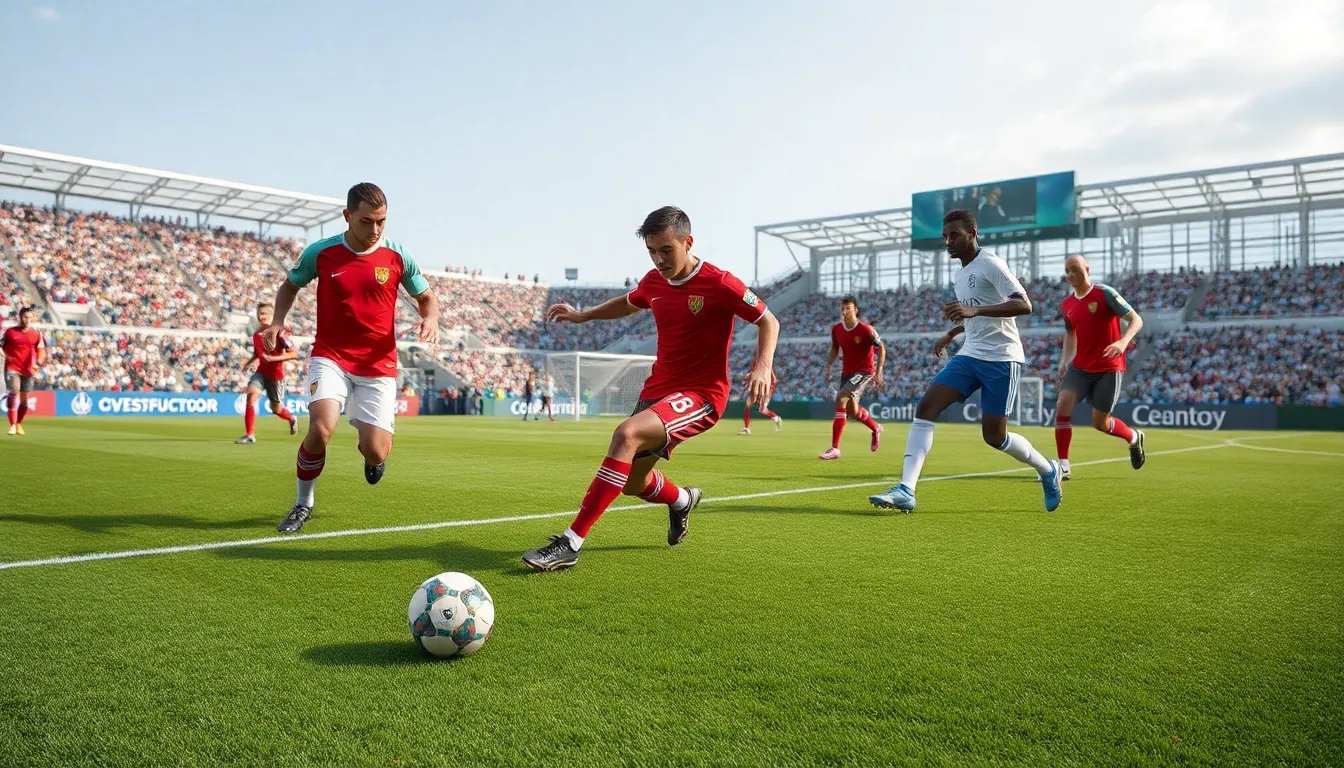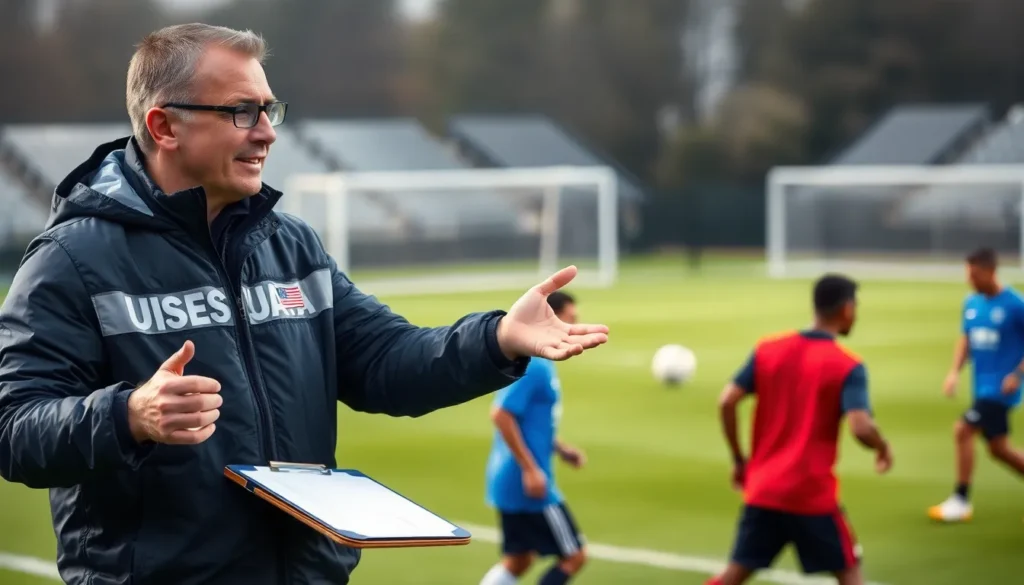Table of Contents
ToggleIn the world of football management, the mezzala role is like that secret sauce that can turn a good team into a great one. Picture this: a player who’s not just a midfielder but a dynamic force, weaving through defenses and creating chaos. They’re the ones who can make a killer pass or score a stunning goal while still being the unsung heroes of the pitch.
Overview of the Mezzala Role
The mezzala role stands out in football management, acting as a dynamic link within the midfield. Its significance lies in the player’s ability to disrupt defenses and enhance overall team performance.
Definition and Origin
The term “mezzala” originates from Italian football, where it describes a midfielder positioned between central and wide areas. This role gained prominence in formations emphasizing fluidity and attacking play. The mezzala navigates the pitch with versatility, fulfilling both creative and defensive tasks. Traditionally, teams employing this role utilized it to maintain balance in midfield while allowing for greater attacking options, demonstrating the Mezzala’s gradual evolution in modern football strategies.
Key Responsibilities
Mezzala players take on various responsibilities that enhance team dynamics. They create scoring opportunities by making penetrating runs into the opponent’s penalty area. Contributing defensively, they apply pressure on opposing midfielders and help regain possession. Supporting wingers and overlapping fullbacks also falls under their purview, emphasizing their adaptability. Furthermore, they often make key passes, linking defense with attack while maintaining tactical awareness. Mastering the mezzala role elevates the team’s gameplay, underscoring its critical presence on the pitch.
Importance of the Mezzala Role in Football Manager

The mezzala role significantly impacts team performance and tactics in Football Manager. Players in this position offer a balance of creativity and defensive solidity, acting as vital connectors within the midfield.
Tactical Implications
Mezzala players excel in tactical flexibility. They operate between the central and wide zones, creating unpredictability for opponents. Effective mezzalas contribute to fluid attacking movements, allowing teams to exploit gaps in defensive setups. Their ability to read the game enhances spatial awareness, enabling timely runs into the box. Additionally, mezzalas can transition quickly from defense to attack, providing vital support to both defensive and offensive plays.
Team Dynamics
The presence of a mezzala can transform team dynamics. These players enhance ball movement, facilitating smooth transitions between midfield and forwards. Strong mezzalas foster better communication among teammates, as their positioning encourages dynamic interplay. Their versatility promotes an attacking mindset while supporting defensive responsibilities. Building a squad that includes a skilled mezzala can elevate overall team chemistry. Such players embody the connection between various team roles, fostering collaboration and synergy on the pitch.
Best Attributes for a Successful Mezzala
Successful mezzala players exhibit a unique mix of physical, technical, and mental attributes that enhance their performance on the field. Mastery of these qualities contributes to their effectiveness in the dynamic role they play within the team.
Physical Attributes
Speed plays a crucial role in a mezzala’s ability to make penetrating runs. Agility allows players to maneuver through tight spaces, making it easier to evade defenders. Stamina ensures that they maintain high energy levels throughout the match, supporting both defensive duties and attacking movements. Strength contributes to shielding the ball and engaging opponents effectively. Together, these physical attributes create a well-rounded midfielder capable of influencing gameplay in various situations.
Technical Skills
Ball control ranks as a primary skill for mezzala players, enabling them to navigate through defenders seamlessly. Passing accuracy fosters successful connections with teammates, particularly in high-pressure scenarios. Dribbling skills help create space and opportunities against tight defenses. Additionally, shooting precision is essential for capitalizing on goal-scoring chances. These technical skills allow the mezzala to act as a key playmaker, linking various phases of the game effectively.
Mental Attributes
Vision contributes significantly to a mezzala’s ability to anticipate plays, helping them find open teammates in advantageous positions. Decision-making skills determine the best course of action under pressure, leading to effective ball distribution and movement. Creativity allows these players to develop innovative strategies that outsmart opponents. Furthermore, tactical awareness helps mezzala players understand their positioning relative to team shape and opponent movements. Together, these mental attributes enhance their overall impact on the game.
Popular Strategies for Utilizing the Mezzala Role
The mezzala role thrives within specific tactical frameworks that enhance its effectiveness.
Formations That Favor the Mezzala
Various formations can maximize the benefits of a mezzala. The 4-3-3 formation often provides the ideal setup, allowing the mezzala to operate between central and wide areas. In this structure, midfielders can support wingers while maintaining defensive solidity. Alternatively, the 3-5-2 formation offers a robust platform for the mezzala to exploit spaces created by wing-backs, promoting dynamic attacking play. Meanwhile, the 4-2-3-1 formation enables the mezzala to link play between midfield and attack seamlessly. Utilizing these formations establishes a fluid interchange among players.
Recommended Player Combinations
Successful implementation of the mezzala role relies on complementary player combinations. Pairing a mezzala with a deep-lying playmaker enhances creativity and builds a strong midfield foundation. Forming a partnership with an aggressive box-to-box midfielder complements the mezzala’s attacking instincts, creating dynamic movement across the pitch. Additionally, linking the mezzala with quick wingers can stretch defenses and open up spaces for penetrating runs. Building these combinations fosters effective attacking strategies, ultimately increasing the overall impact of the mezzala within the team’s tactics.
The mezzala role stands as a game-changer in football management. Its ability to blend creativity with defensive responsibilities creates a unique dynamic that can significantly enhance a team’s performance. By mastering the attributes and strategies associated with this position, managers can unlock their players’ potential and foster a more fluid and unpredictable attacking style.
As teams continue to evolve tactically, the mezzala’s importance will only grow. Its versatility allows for seamless transitions between defense and attack, making it a vital component in modern football. Embracing this role can lead to improved team chemistry and ultimately elevate gameplay to new heights.




